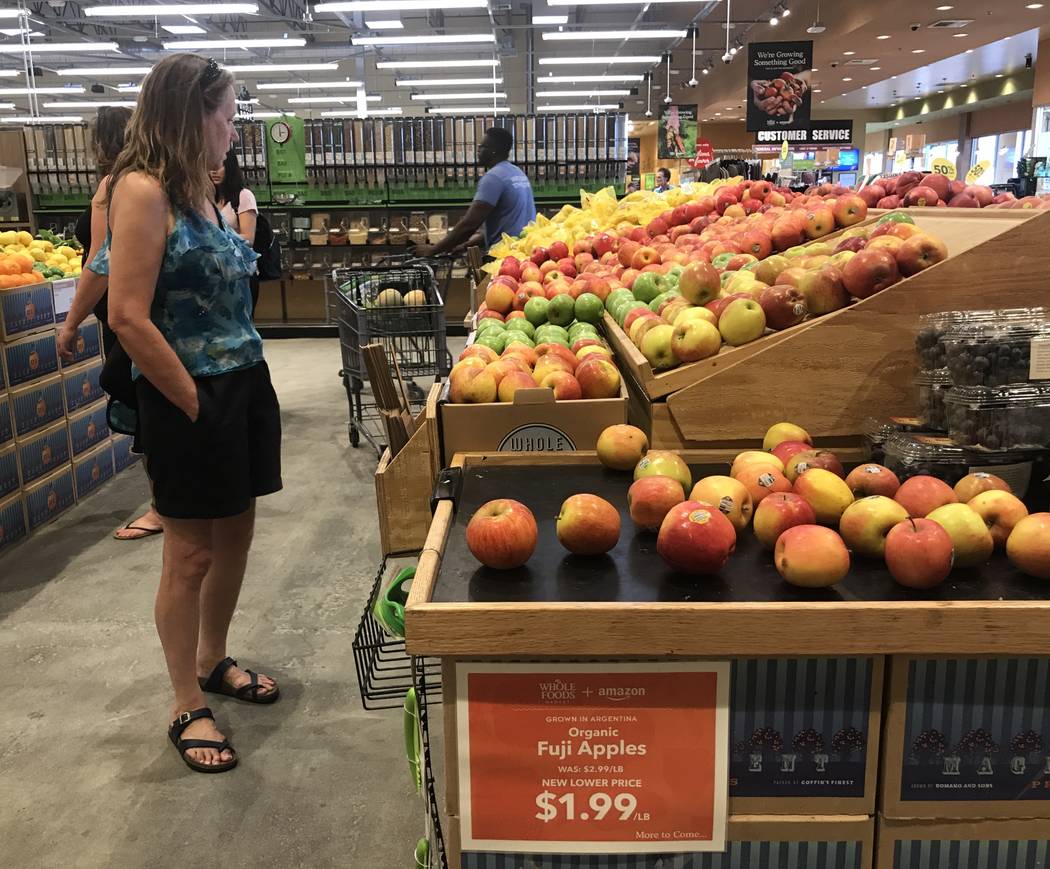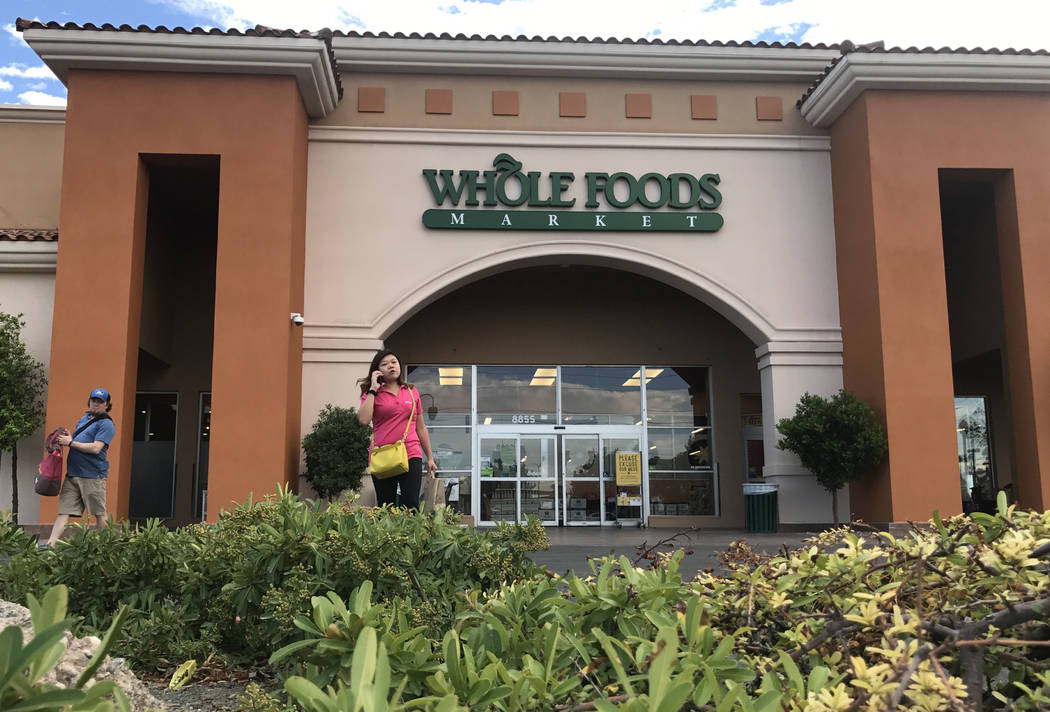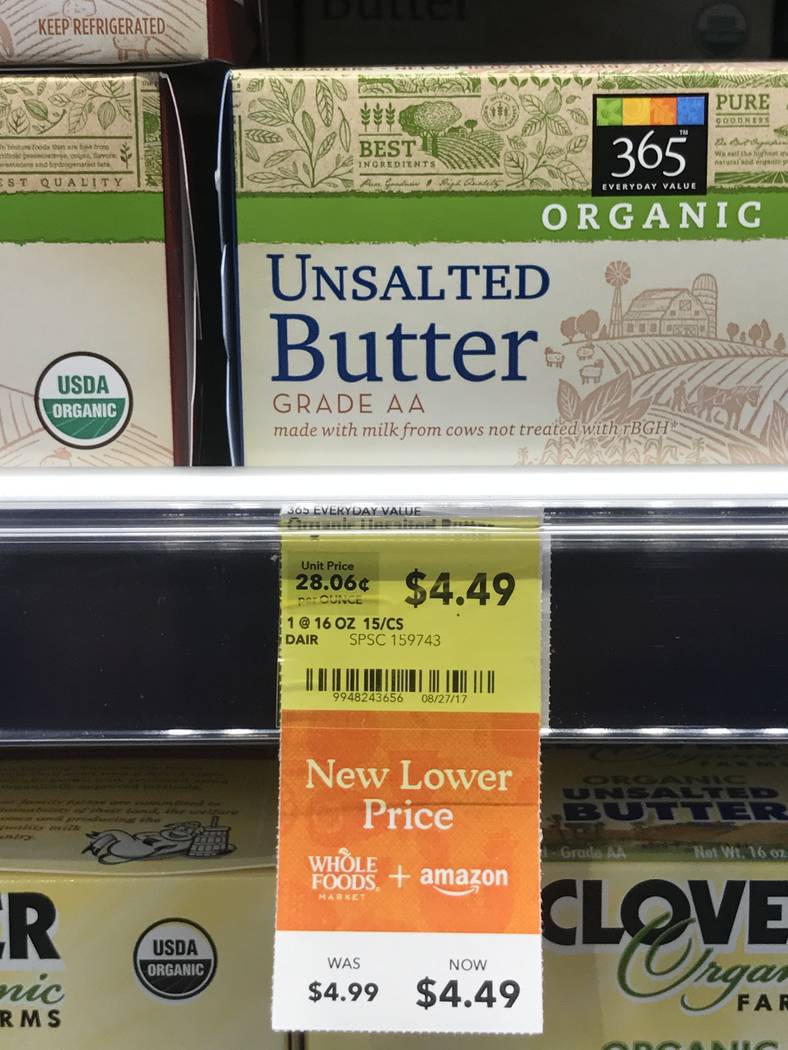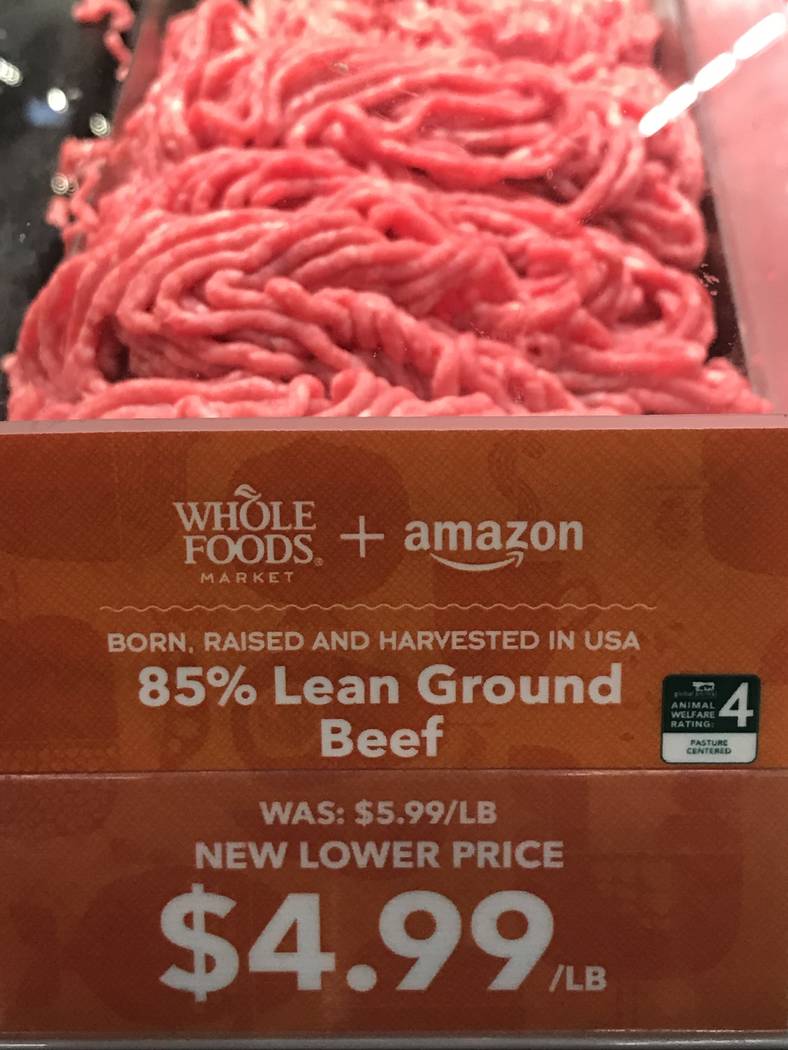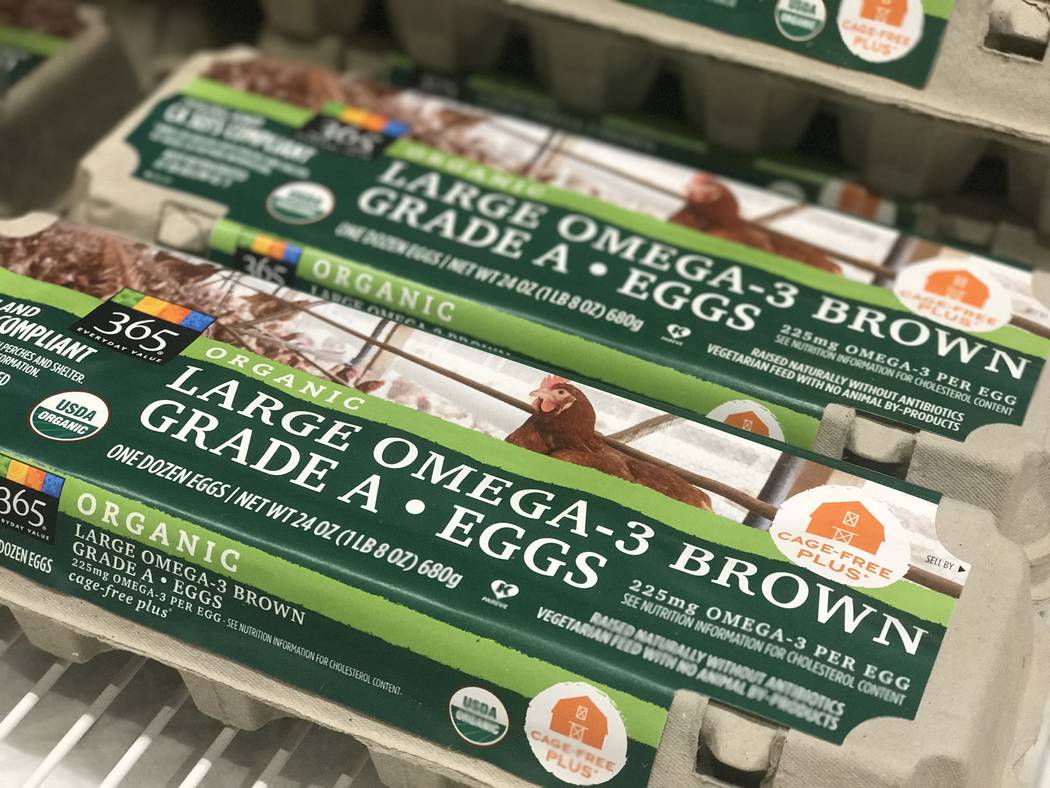Las Vegas shoppers pleased with lower prices at Whole Foods
Savannah Smith never thought of ordering groceries online.
But if Amazon moves some of its new subsidiary Whole Foods’ vegan products to its website, Smith said she may give it a shot.
“It’ll save me another trip,” the 32-year-old said outside the Whole Foods near U.S. Highway 95 and Lake Mead Boulevard.
Amazon kicked off its first day as the owner of Whole Foods by slashing some prices, adding its logo on signs and setting up a stand of “farm fresh” Amazon Echo voice-assistant devices by select store entrances.
It’s just the first taste of the moves the e-commerce giant will make at the organic grocer after it completed the $13.7 billion deal Monday.
A half-gallon of milk was 50 cents cheaper at a Whole Foods in New York. Ground beef was down by $2 a pound. And an organic avocado cost a buck less.
More changes are coming: The company aims to make Amazon Prime the rewards program at Whole Foods, and some Whole Foods products will show up on Amazon’s site. The deal could also spur changes in how people shop for groceries overall.
Whole Foods has four locations in the Las Vegas Valley.
Erin Dickler, 62, said she noticed a container of vitamins she purchases at the Lake Mead Whole Foods was less expensive. An employee had told her more prices are expected to drop over time.
“We’re very excited,” she said.
Dickler and her husband, Alan, have shopped at Whole Foods because they like the products, she said.
Sipping a cup of kombucha she’d bought inside, she said she couldn’t imagine buying produce online. Those are the type of goods she likes to feel and see in person.
Amazon’s investments have also trickled down to the valley. The company began fulfilling orders at a North Las Vegas distribution center a few weeks ago.
Changes for shoppers
Amazon already lowered prices at Whole Foods on Monday on a range of items, including rotisserie chicken, organic eggs and baby kale.
Whole Foods was just starting to test a loyalty program. But soon shoppers at all stores will be able to tap Amazon’s $99-a-year Prime program to get discounts at stores. And they will eventually be able to buy some Whole Foods products from Amazon.com. Lockers will be added in some locations so shoppers can pick up e-commerce orders or return items they don’t want.
Amazon said those changes were just the beginning, but it didn’t give details on what more is coming. Those who watch the industry expect Amazon to push further into grocery deliveries, among other things. Whole Foods stores can serve as new distribution points for the AmazonFresh delivery service, allowing Amazon to expand where it offers home deliveries. That could include an expansion of the ready-to-cook meal packages it’s been testing in selected markets, such as Seattle.
What Amazon wants
The deal gives Amazon more than 465 physical stores in the U.S., Canada and the United Kingdom. Before the acquisition, Amazon had a small brick-and-mortar presence with fewer than a dozen bookstores, a prototype convenience store in Seattle and pickup locations near some college campuses. The tie-up may also give the Seattle-based company valuable data on how people shop in stores, where the vast majority of retail sales still take place. Amazon is an expert in using data on purchases and browsing to offer suggestions that might make people buy more, and it could start applying that in stores as well as online.
Whole Foods, meanwhile, gets to exhale. Before the deal, the chain was under pressure from shareholders to improve its financial results and figure out how to stop customers from going to lower-priced supermarkets to buy natural foods. Whole Foods CEO John Mackey, who will stay in that role, said Amazon’s history of innovation could transform Whole Foods from “the class dunce” to “valedictorian.”
What it means for competition
Shares of supermarkets took a hit when the deal was announced in June, and again when Amazon said last week that it planned to cut prices at Whole Foods. Rivals are scrambling to keep up: Kroger is testing online grocery delivery in several cities. And Walmart, the nation’s largest grocer, is expanding its online grocery ordering and store-curb pickup services to more stores. Last week, Walmart said it is joining forces with Google to let customers order goods with their voice on Google-run smartphones and other devices.
How the deal went through
Despite Amazon’s dominance online, Walmart remains the leading retailer overall, with more than three times Amazon’s retail revenue. A union that represents food-industry workers had asked the Federal Trade Commission to examine the deal carefully, saying it could hurt competition, but the regulator didn’t see it that way. The FTC said last week that it conducted an investigation to see if the acquisition lessened competition and “decided not to pursue” the matter. Typically, deals that bring two direct competitors together raise flags with regulators, but Amazon — despite its online dominance — doesn’t have a big grocery business.
Contact Wade Tyler Millward at wmillward@reviewjournal.com or 702-383-4602. Follow @wademillward on Twitter. The Associated Press contributed to this report.



